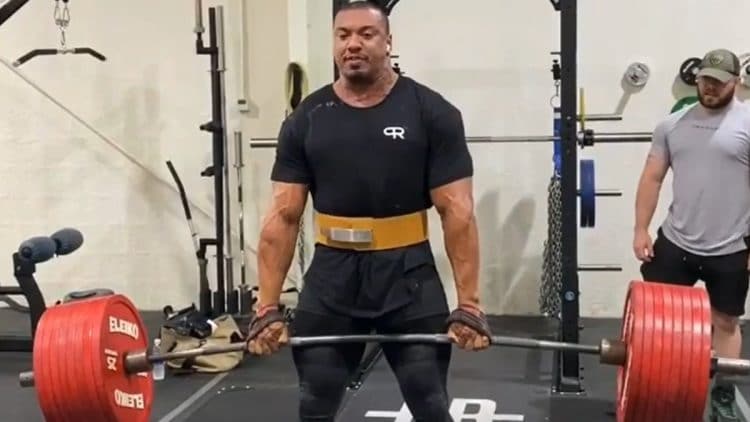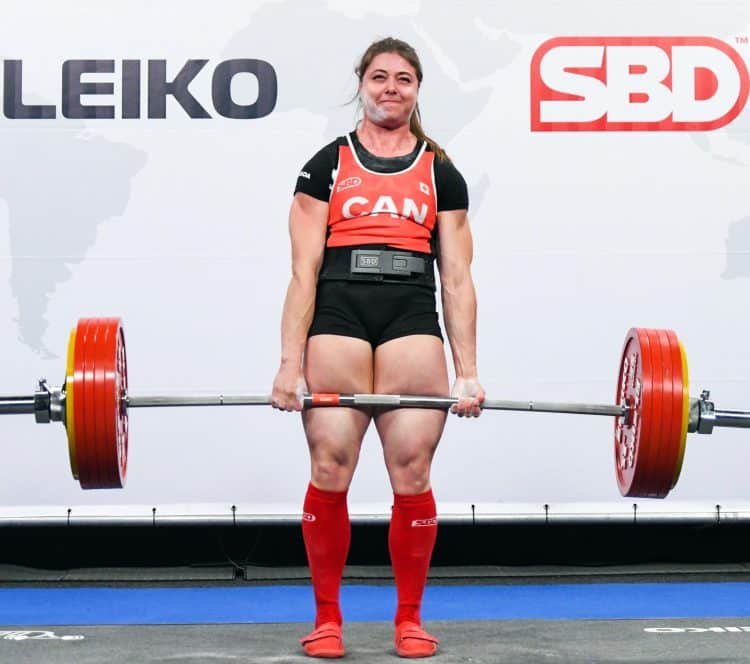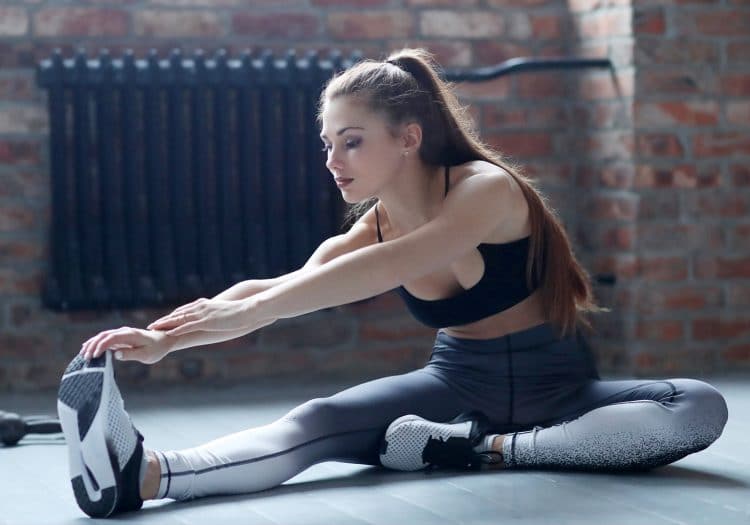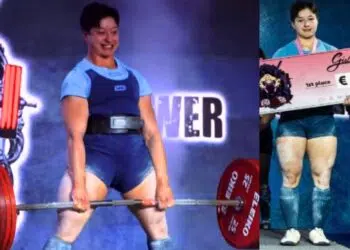As soon as you get a little serious about lifting weights, you’ll probably have friendly neighborhood gym bros question you about your personal records (PRs). Now, you really want to think long and hard before you answer them, as this could be a slippery slope.
If you give them the slightest of hints that you have no idea what a PR is or rather blabber about a PR that is considered warm-up weight by your interviewer, their respect for you will end faster than an eventful Sunday.
What is a PR?

The fitness culture has its fair share of abbreviations, acronyms, and short hands, and getting a knack for these short forms can be a little overwhelming, especially for a rookie.
PR (personal record) could be considered an essential of the gym lingo and refers to a lifter’s personal best in a lift. Personal records work in two ways:
1. Max Weight
While talking about PRs, most exercisers are usually referring to the max weight they have logged in for a rep. For example, if you have bench pressed 225 pounds for a rep, that can be considered your PR.
2. Max Reps
PRs can also mark the highest number of reps you have performed with a specific weight in an exercise. If you have deadlifted 225 pounds for 10 reps, that will be considered your 225-pound deadlift PR.
Level Up Your Fitness: Join our 💪 strong community in Fitness Volt Newsletter. Get daily inspiration, expert-backed workouts, nutrition tips, the latest in strength sports, and the support you need to reach your goals. Subscribe for free!
To sum it up, to set a new PR in the gym, you could lift heavier than your previous best or perform more reps with a certain amount of weight than your previous maximum reps with the same weight.
PR and 1RM
Reading the last section has probably got you thinking about one-rep maxes. While many people use personal record (PR) and one-rep max (1RM) interchangeably, they are not the same thing. However, you could use personal records and personal bests in place of one another.

Differences Between Personal Record and One-Rep Max
Given below are the most prominent differences between the two variables:
1. A Single Number For an Exercise
One of the biggest distinctions between PRs and 1RMs is that you can only have a single one-rep max for every exercise. Whereas, you could have multiple personal records in the same exercise.
Confused? This should clear things out.
If you say your one-rep max on the bench press is 315 pounds, you are implying that 315 pounds is the maximum weight you can lift on the exercise for a single rep.
On the other hand, if you tell a fitness aficionado that your personal record on the bench press is 315 pounds, they’ll probably ask you for more details.
A 315-pound bench press personal record could mean that it is the max weight you can lift on the exercise. However, you could have a different personal record for different weights on the bench press.
For example, your bench press PRs could look something like this:
- 10 reps with 315 pounds
- 12 reps with 225 pounds
- 20 reps with 135 pounds
2. Timelines
Personal records or personal bests cover both present and previous periods. You could have set a PR a few years ago or a couple of days back. The maximum weight you could lift or reps you could perform with the weight will forever be regarded as your personal best.
However, when someone asks you about your one-rep max, they usually want to know how much weight you can lift on a particular exercise right now, of course after adequately warming up. In that sense, one-rep maxes exclusively apply to the present.
3. To Set a PR, You Actually Need To Lift the Weight
Sounds weird, right? But hear this out.
Many advanced bodybuilding and powerlifting programs require you to use a specific amount of weight based on your one-rep max for a defined number of reps.
For example, your coach might ask you to perform 10 reps on the deadlift with 60% of your one-rep max on the exercise. Now, you could go all-out on the lift and try lifting as heavy as possible to determine your 1RM, but it increases your odds of an injury, especially if you are a beginner.
Our free and convenient online one-rep max calculator can help you figure out your one-rep max without lifting super heavy. However, you will still need to know the maximum number of reps you can perform with different weights.
On the other hand, if you’re trying to set a new personal best, you’ll have to do the dirty work. It is also why the powerlifting world uses the words personal bests and not one-rep max. It is also a perfect segue into our next section — personal records in powerlifting.
PRs in Powerlifting Competitions
Setting personal records in the gym and sanctioned powerlifting meets mean the same thing — you need to lift the heaviest weight. However, in a powerlifting meet, you need to abide by competition-specific rules, which could dictate the use of straps, weightlifting belts, lifting suits, knee wraps, and correct lifting techniques.
Different federations have different rules, so ensure you are thorough with them before attempting a lift.

Benefits of Hitting a PR
To be honest, hitting PRs isn’t easy. Most of us aren’t like Larry Wheels, who is always trying to hit a new record in every workout. Heck, even if we wanted to, our bodies might not play ball.
Hitting, or attempting, personal records every time might put you in uncomfortable situations, make you question why you’re doing what you’re doing, and might even make you want to give up.
If you’re wondering why you should bother with attempting PRs instead of sticking to conventional bodybuilding, powerlifting, weightlifting, or CrossFit routines, it’s time to be acquainted with the concept of progressive overload.
Progressive overloading includes gradually increasing the weight, frequency, or number of repetitions in your strength training routine. Now, doesn’t this fit perfectly with the idea of setting personal records?
Level Up Your Fitness: Join our 💪 strong community in Fitness Volt Newsletter. Get daily inspiration, expert-backed workouts, nutrition tips, the latest in strength sports, and the support you need to reach your goals. Subscribe for free!
Training for hitting new personal records every few weeks will challenge your muscles and can help avoid muscle and strength plateaus. Performing the same workouts for a long time will accustom your muscles to your training routine and is one of the fastest ways of hitting an overhead ceiling.
Related: Muscle Development With Progressive Overload – The Concept You Must Know To Grow!
How To Test Your PR
The process of testing your personal record is serious business. You should not expect it to be as easy as walking into the gym, heading to the weights section, and lifting heavier than you did the last time.

You need to be prepared physically and mentally to hit a new personal best. Here is how to test your personal bests for the two different situations mentioned above:
1. How To Test Your PR For Maximum Weight
If you want to know “what does PR mean in the gym,” the best individual to answer the question is someone who has just set a new personal record. Setting a new PR feels like winning a war. It makes you happy, ecstatic, and feel satisfied.
Use the following steps to test for a max weight PR:
- Perform static and dynamic stretches at the beginning of a workout.
- Warm-up using adequate weights.
- Many lifters make the mistake of performing 10-12 reps in a warm-up leading to testing a two to three rep PR.
- If your PR is based on low (three or below) reps, you should warm up with a weight that does not let you do more than five to seven reps.
- Perform up to five sets to warm up your muscles. Performing more than five sets can lead to muscle fatigue, negatively impacting your performance.
- Make sure you always have a spotter while attempting a PR.
2. How To Test Your PR For Maximum Reps
If you’re trying to set a PR in the hypertrophy rep range (10-12), then you don’t need to be doing five sets of warm-ups as the amount of stress on your joints and ligaments will be less compared than in the case of attempting a personal best for maximum weight.
In prep for testing a new max rep PR, you should spend five to ten minutes performing static and dynamic stretches and a few sets of the exercise you want to set a record on while using an adequate weight.
Although you’ll be using a less challenging weight on this type of PR, you should still use a spotter to minimize the chances of an injury.
Related: Is Training To Failure Necessary For Muscle Hypertrophy?
How To Break Your PRs
Breaking personal bests in the weight room gets harder as you get more advanced. However, you could work towards breaking your PRs frequently by using the following steps:
1. Expand Your Exercise Arsenal
Many lifters make the mistake of overly focusing on the exercise that they want to hit a personal best on. The best way of building strength is to ensure that you have a balance of compound and isolation exercises in your training regimen.
2. Improve Your Warm-up Game
You should always begin a workout with a five to ten-minute stretching and warm-up routine. Not only does it prime your muscles, but it also helps put you in a mental zone to crush your workout.
3. Set a Goal For Yourself
Hitting personal bests doesn’t happen randomly, especially for advanced lifters. While newbies might hit new personal bests in every few workouts as they experience strength gains, it won’t be the same for more advanced exercisers. Set a big hairy audacious goal for yourself and work towards it.
4. Track Your Progress and Stay Consistent
Many lifters never hit a PR goal because they do not track their progress. Use a convenient method of logging your progress and keep yourself accountable by sharing it with your friends or coach.
Plus, you’ll need to be consistent and have military-like discipline in your PR-setting approach.
5. Use Proper Technique
Lifting with proper technique can make all the difference in achieving your PR goal. It is one of the reasons why professional powerlifting meets stress on the importance of lifting with the right form.
6. Fix the Big Three
You need to hit the trifecta if you’re serious about crushing PRs in the gym, meaning you’ll have to ensure that your diet, training, and recovery program are spot on.
7. Never Give Up
Hitting a new personal best isn’t easy, and anyone who tells you otherwise is lying. You will experience failures and plateaus on the way, but you need to push through them every single time.
How To Track Your PRs
If you’re a serious lifter, you should maintain a workout log book. If you do not track your lifts, you’ll end up experimenting with the same weights every time in the gym, making you leave gains on the table.
Workout tracking shouldn’t be limited to personal records. You should ideally maintain a journal of each of your workouts, which should have details about the exercises, sets, reps, rest time, and notes on your mood, thoughts, and muscle pumps.
If you think you cannot maintain such a big list, you should still stick to journaling about your exercises, sets, reps, and rest durations. Now, there is no set rule for tracking your PRs or workouts.
You should find and stick with the method that works the best for you. You could carry a paper and pen to the gym, use your phone’s notes app, a spreadsheet, or one of the many workout tracking apps to journal your progress.
Every time you hit a personal record in the gym, note it in a section dedicated to PRs and make sure you look at it before each workout. Doing this might motivate you to push yourself harder to break your records.
Wrapping Up
Besides giving you bigger numbers to boast about to your friends, hitting PR in the gym can have physical and psychological benefits. Hitting a PR is a sign that you have gained strength, which can boost your self-image and confidence.
However, make sure you’re not rushing through the PR-setting process. Treat it like the ritual it is, and you’ll minimize the risk of injury while improving your longevity. And lastly, do not forget to tag us in your PR-setting posts on social media. Best of luck.












